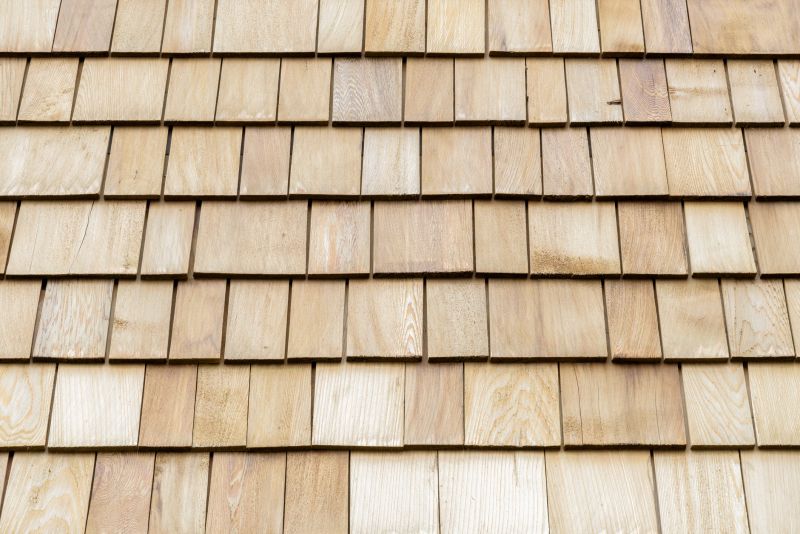Favorite Shake Siding Installation Products For Quality Craftsmanship
Browse popular products that help achieve professional-grade shake siding installations with durable and attractive finishes.
 Installing shake siding requires a combination of durable materials, proper tools, and precise techniques to ensure a secure and visually appealing finish. The process involves selecting the right type of siding material, preparing the surface, and properly fastening each piece to withstand weather elements. Understanding the different product options available can help homeowners and contractors achieve a professional result. Shake siding can be made from various materials, each offering unique benefits in terms of appearance, durability, and ease of installation.
Installing shake siding requires a combination of durable materials, proper tools, and precise techniques to ensure a secure and visually appealing finish. The process involves selecting the right type of siding material, preparing the surface, and properly fastening each piece to withstand weather elements. Understanding the different product options available can help homeowners and contractors achieve a professional result. Shake siding can be made from various materials, each offering unique benefits in terms of appearance, durability, and ease of installation.
Top Overall Option
Premium Shake Siding Fastening System
A comprehensive fastening system designed specifically for shake siding, offering a combination of corrosion-resistant nails, clips, and spacers. This system ensures secure attachment and allows for natural expansion and contraction of the siding material, helping to maintain the integrity of the installation over time.
Types of Products For Shake Siding Installations
Wood Shake Siding
Traditional wood shakes providing authentic appearance and natural texture, often requiring specific fasteners and underlayment for proper installation.
Fiber Cement Shake Siding
Durable and low-maintenance alternative to wood, offering resistance to pests and weather, with specialized fasteners and sealants for installation.
Engineered Wood Shake Siding
Manufactured wood products designed for easier installation and consistent appearance, compatible with standard siding accessories.
Plastic Shake Siding
Synthetic options that mimic traditional shakes, lightweight and easy to install, often using specialized clips and fasteners.
Asphalt Shake Siding
Affordable and lightweight, with specific adhesives and fasteners tailored for asphalt-based shakes.
Metal Shake Siding
Metal shakes provide a modern look and high durability, requiring corrosion-resistant fasteners and proper flashing materials.
Underlayment and Weather Barrier
Protective layers installed beneath shake siding to prevent moisture infiltration and improve insulation.
Fasteners and Nails
Specialized nails and fasteners designed for shake siding to ensure secure attachment and accommodate material expansion.
Flashing and Trim Components
Metal or vinyl flashing and trim pieces that help seal joints and edges, preventing water intrusion.
Sealants and Caulking
Weatherproof sealants used around edges, joints, and trim to enhance durability and prevent leaks.
Ladder and Safety Equipment
Essential safety gear and tools to facilitate safe and efficient installation at various heights.
Siding Removal Tools
Tools designed for removing old siding or preparing surfaces for new shake siding installation.
Power Drills and Fastening Tools
Electric tools that speed up fastening and ensure consistent application of fasteners.
Measuring and Marking Tools
Accurate tools for measuring, marking, and aligning shake siding components during installation.
Popular Choices
Pre-cut panels that simplify installation while maintaining a traditional appearance.
Resistant to pests and weather, these boards are popular for their durability and low maintenance.
Lightweight and easy to handle, these shingles offer a versatile option for various architectural styles.
Modern metal panels that provide a sleek look and high longevity, favored in contemporary designs.
All-in-one kits for sealing joints and edges, essential for weatherproofing shake siding.
Variety packs of nails and screws tailored for shake siding installation, offering flexibility for different materials.
Flexible weather barriers that are popular for protecting the structure beneath shake siding.
Decorative and protective trim pieces that are frequently used in shake siding projects.
Safety equipment that enhances stability during installation, increasingly preferred for safety compliance.
Tools that facilitate the efficient removal of existing siding, often trending due to renovation projects.
The selection of accessories and supplementary products is equally important. These include fasteners, underlayment, flashing, and sealants, which contribute to the longevity and performance of the siding. Proper installation not only enhances aesthetic appeal but also protects the underlying structure from moisture intrusion and other potential damage. Whether working on a new build or a renovation project, having the right products tailored for shake siding installation can make the process more efficient and effective.
It is also essential to consider the specific requirements of each project, such as climate conditions, the type of shake siding used, and the architectural style of the building. Different product variations are designed to accommodate these factors, providing options for different budgets and skill levels. Investing in quality products and understanding their application can help achieve a durable, attractive finish that lasts for years to come.
Overall, a successful shake siding installation depends on choosing the right combination of materials and accessories, along with proper techniques. By selecting products that align with the project's needs, homeowners and professionals can create a beautiful, functional exterior that enhances the property's curb appeal and structural integrity.
Key Buying Considerations
- Material durability and resistance to weather elements
- Compatibility of fasteners with siding material
- Ease of installation and available tools
- Compatibility with existing structural components
- Aesthetic preferences and architectural style
- Maintenance requirements and longevity
- Cost and overall project budget
- Availability of accessories like trims and flashings
- Weatherproofing features such as sealants and underlayment
- Safety features and equipment for installation
- Environmental conditions of the installation site
- Manufacturer warranties and product support
- Ease of removal or replacement in future repairs
- Weight of siding material and handling considerations
- Local building codes and regulations compliance
This content contains affiliate links. We may earn a commission if you purchase through these links, at no additional cost to you.
